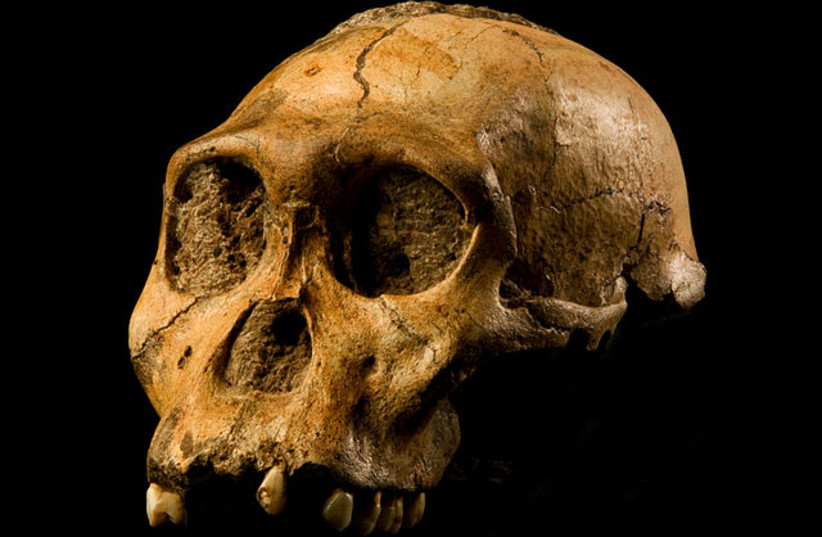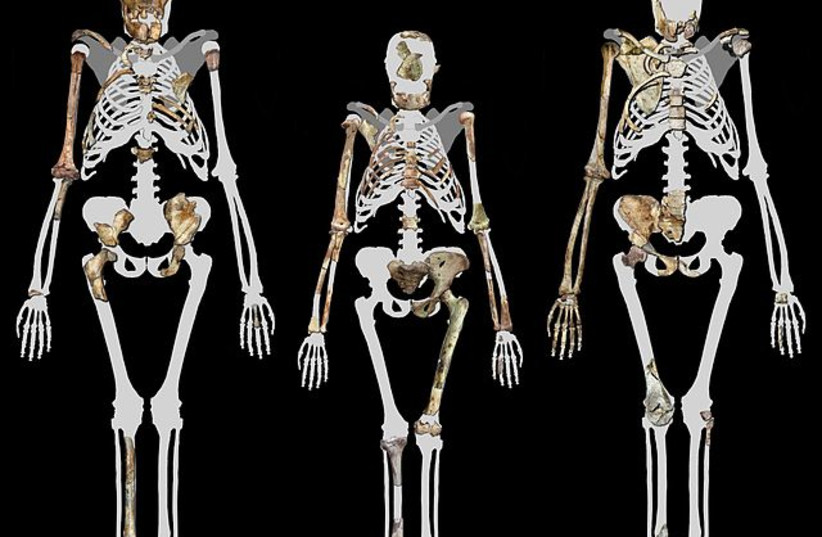Malapa Hominin 1 (MH1) left, Lucy (AL 288-1 (Centre), and Malapa
Hominin 2 (MH2) right. Image compiled by Peter Schmid courtesy of Lee R.
Berger, University of the Witwatersrand.
(photo credit: Wikimedia Commons)
Modern humans have been evolving and developing the ability to walk
upright for over two million years, new research into a fossilized
spine of an early human ancestor has revealed.
A peer-reviewed study published by eLife
and led by New York University paleoanthropologist Scott Williams looks
to shed new light on the development of bipedalism – walking on two
legs – through examining the near-complete fossilized lower back of a
female Australopithecus sediba.
A. sediba is estimated to have lived nearly two million years ago and is thought to be a predecessor to the Homo genus, to which modern humans, Homo sapiens, belong – but this is contested by some who suggest it may be a sister species.
The first A. sediba fossil was discovered in 2008 at the
Malapa Fossil Site near Johannesburg, South Africa, but the fragments
were too incomplete to determine whether or not the species had been
bipedal or quadrupedal. However, a more recently discovered fossil
specimen from the same location, labeled MH2, has provided a more
complete picture of this early human ancestor.
Human
bipedalism is achieved through the forward curve of the lower section
of the spine, enabling an upright posture. This differs from other ape
species – chimpanzee, orangutan and gorilla – all of whom lack this
curvature and walk on four limbs when not up in the trees.

The cranium of Malapa hominid 1 (MH1) from South Africa, named
''Karabo''. The combined fossil remains of this juvenile male is
designated as the holotype for Australopithecus sediba. (credit:
Wikimedia Commons)
The structure of the fossilized A. MH2 vertebrae suggests that the A. sediba
would have walked comfortably on two legs, but other aspects of the
species' bone structure indicate that it would probably still have spent
a significant amount of time climbing trees.
The knee and ankle bones of the A. sediba
"demonstrate clear evidence for bipedal locomotion," the study states,
explaining that they possess human-like traits such as the ankle joint
and the angle of the femur bone. Most importantly, the well-preserved
MH2 spine indicates a clear curvature, more so than any other early human fossil, backing up the hypothesis that the species was well adapted to walking on two legs.
That
is not to say that the species' spine had fully evolved into the spine
of a modern human, however. The study notes that although it is
"somewhat human-like in overall shape, its costal processes [a section
of the cervical vertebrae] are long and cranially oriented, unlike
modern humans," and that it is somewhere between the spine of the modern
Homo sapien or extinct Homo neanderthalensis and the great apes.



No comments:
Post a Comment
Stick to the subject, NO religion, or Party politics